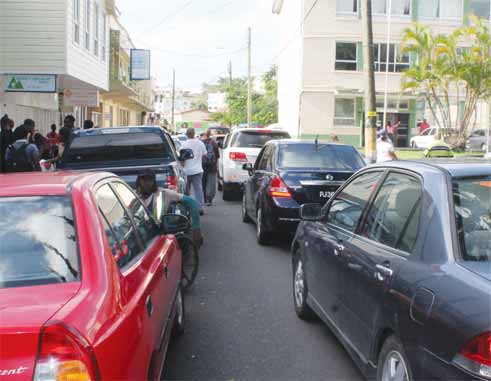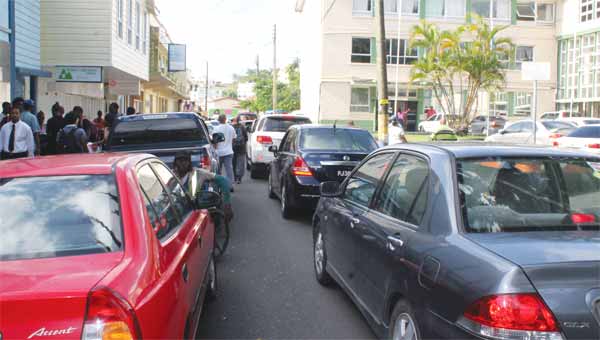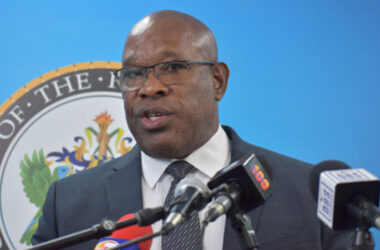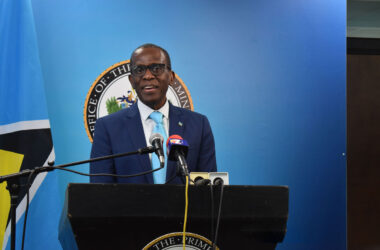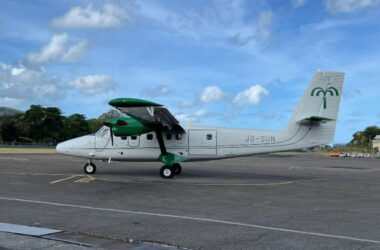OWNERS of vehicles will be digging deeper into their pockets come Tuesday to pay their annual licence fees.
That’s when the increase announced by Prime Minister Dr. Kenny Anthony last May during his budget address take effect .
The last revision to the vehicle licence regime was in 2009. It was then that annual vehicle licenses were re-introduced and two broad categories were stipulated. Presently cars, jeeps and minibuses pay a fee of $150 while all goods vehicles and earth moving equipment pay $300.
At the time, the Prime Minister noted that the present system cannot be considered fair as it did not cause the owner of larger vehicles in particular to make a fair contribution towards the maintenance of the country’s roads predicated on the fact that their contribution to road deterioration was greater.
“It is recognized that there is a correlation between the weight of vehicles that traverse our roads and the level of deterioration that we have seen,” Allison Jean, Permanent secretary in the Ministry of Infrastructure and Transport told reporters yesterday.
Vehicles have been divided into three classes, A, B and C. The fee structure which comes next week is as follows: Vehicles that fall under the heading ‘Private’ have a fee structure ranging from $250 – $350. This means that vehicles weighing less than 1,134kg will pay $250. Those from 1,134kg to 1,587kg will pay $300 while those weighing 1,588 and over will be charged $350.
The same fee structure that applies to private vehicles applies to hired vehicles. However, goods vehicles have been placed in four classes from A – D. Those weighing less than 1,001kg will be charged a fee of $450. Class B vehicles weighing 1,001kg – 3,000kg will pay $550 while those in Class C weighing between 3,001kg to 5,000kg have been slapped with a fee of $600. One hundred dollars more have been added to the fee for Class D vehicles weighing 5,001kg and over.
The fee for minibuses, which is $150 has not changed neither was that for farming vehicles with FAR plates, which also stands at $150. Also remaining at $150 are motorcycles and hearses pulled by motorcycles.
The annual licence fee for a hearse is now $300 while the fee for a mobile crane is $500. Earth moving equipment will pay a fee of $750, the same for tractors with pneumatic tyres, rollers, unit heads for container trucks and concrete mixing trucks.
But will those increases mean a better road network for the country?
Not so, said Jean, who made the point that while the increases correspond with what the government ought to be receiving for road rehabilitation, it costs the government about $1.5 million to rehabilitate one mile of road.
“The revenues that we project to receive out of these increases would only be $3.5 million annually. The increases are not adequate to do road rehabilitation throughout the length and breadth of the country,” she said.
But there is more behind these increases than the explanation given.
The Permanent Secretary explained that loan agreements with the Caribbean Development Bank and the Kuwait Fund suggest the implementation of a vehicle weight control management system. Further that those funding agencies wanted to know that the country would have some source of funding, a maintenance plan to ensure that the infrastructure remains sound for a period of time.
“It has always been an imperative by the multi-lateral agencies that governments adopt a vehicle weight control management system and charge fees that would be commensurate with the deterioration that is caused on our roads,” Jean said.
She said that in many parts of the world the rates that are applicable are the gross weights, meaning the weight of a vehicle when it is filled with people which attract a much bigger fee. What is being charged here, Jean claimed is the kerb weight, meaning the weight of a vehicle when it is empty, which is without persons inside.
Jean emphasised that the increase in the annual licence fee is not a revenue generating mechanism because the money collected annually is inadequate to take care of the island’s road network, it being just a fraction of what is required. However she noted that collecting revenues for that purpose through vehicle fees is an appropriate mechanism
The Ministry, in a statement yesterday, noted that in an attempt to ensure that the system is administered fairly and smoothly, a list of 600 vehicles disaggregated by manufacturer had been collated by the Ministry of Finance with kerb weights covering the period 1995 to 2015, a list that will be updated on a periodic basis.
“Discussions have been held with the Customs and Excise Department to amend their administrative procedures to ensure that weight of vehicles imported is captured and appropriately stored. It is anticipated that the Customs and Excise Department will on a monthly basis send to the Ministry of Infrastructure, Port Services and Transport a list of vehicles imported for that period and their weight,” the Ministry noted in its statement.
According to the Ministry the country’s road infrastructure is aging and each day the government has to respond to the demands of the citizens for world class structure. Therefore the additional revenue form this measure will assist in bolstering governments’ public sector investment in road maintenance.


